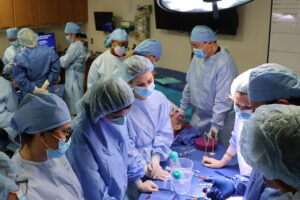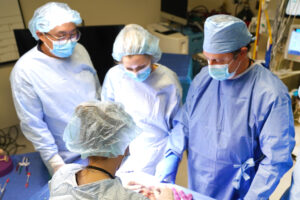The Importance of Understanding Vascular Anatomy
In aesthetic medicine, safety begins with a detailed knowledge of anatomy. Injectables such as fillers and neurotoxins are widely regarded as safe, but the reality is that without an awareness of underlying vascular structures, the risk of serious complications increases significantly. Vascular occlusion, tissue necrosis, and even blindness are rare but devastating outcomes that can occur when injectors unknowingly deliver product into or near a blood vessel. This is why mapping the face’s vascular “danger zones” is essential for every practitioner. Cadaver-based anatomy training offers unparalleled opportunities to see and understand these structures in three dimensions, far beyond what textbooks or diagrams alone can provide.

High-Risk Regions Every Injector Should Know
Certain facial regions pose greater risks because of their vascular complexity and the superficial course of key arteries. The glabellar region, located between the eyebrows, contains the supratrochlear and supraorbital arteries; intravascular injection in this zone has been linked to necrosis and blindness due to retrograde flow to the ophthalmic artery. The nasal dorsum and sidewalls are another high-risk area, housing the dorsal nasal and angular arteries, where complications can have similarly severe consequences.
The nasolabial fold is a common site for filler injections, but it is also home to the angular artery, which increases the risk of ischemia if product enters the vessel. In the tear trough region, the infraorbital artery runs close to the surface, making this delicate area prone to bruising, swelling, or vascular compromise. The lips, with their superior and inferior labial arteries, carry a high risk of vascular occlusion when injections stray into the vermillion border. Finally, the temporal region, supplied by the superficial temporal artery and its branches, can suffer scalp or forehead necrosis if compromised.
Safe Injection Practices
While the risks are significant, they can be minimized through safe injection practices informed by strong anatomical knowledge. Techniques such as using cannulas in high-risk areas, aspirating before injecting, and administering product slowly with minimal pressure all contribute to safer outcomes. Staying within the correct anatomical plane and always having hyaluronidase readily available in case of filler-related vascular emergencies are additional safeguards that should be standard in every injector’s toolkit.
The Value of Cadaver Training
Textbook diagrams and surface anatomy can only provide a partial understanding of the face’s vascular structures. True comprehension comes from cadaver dissection, which allows injectors to visualize the exact location and depth of vessels in relation to muscles, fat compartments, and bone. This hands-on training transforms theoretical knowledge into practical expertise, giving practitioners the confidence to inject with precision and significantly reduce the risk of complications.
Conclusion
Mapping facial vascular danger zones is more than academic knowledge—it is an essential safeguard for every injector committed to patient safety. By combining anatomical awareness with safe technique and cadaver-based training, practitioners can elevate both the safety and artistry of their aesthetic practice. Patients ultimately benefit from outcomes that are not only beautiful but also achieved with the highest standard of care.


